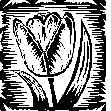 |
Plant Physiology (Biology 327) - Dr. Stephen G. Saupe; College of St. Benedict/ St. John's University; Biology Department; Collegeville, MN 56321; (320) 363 - 2782; (320) 363 - 3202, fax; ssaupe@csbsju.edu |
 |
Plant Physiology (Biology 327) - Dr. Stephen G. Saupe; College of St. Benedict/ St. John's University; Biology Department; Collegeville, MN 56321; (320) 363 - 2782; (320) 363 - 3202, fax; ssaupe@csbsju.edu |
Independent Research Project:
Documenting Plant Growth and Development
Objectives:
Upon
completion of this laboratory you should be able to:
use the QuickCam Pro digital video camera
create and analyze a time lapse movie
design and conduct an experiment
document the growth and development of a plant
Overview & Introduction:
During
this lab we will study plant growth and development by making a time-lapse movie
using the Logitech QuickCam Pro.
Essentially you and your team-mates will choose a phenomenon to study that can
be analyzed using time lapse imagery, design and conduct your experiment, and
then present your results to the class.
Lab Activity:
Select a phenomenon to study. Choose a response that occurs
relatively
"quickly" - that is, can be observed in a few days or less.
Some possible topics include:
stages of the life cycle of Rapid cycling Brassica
rapa (RCBr, Fast Plants), seed germination in various species, root growth, gravitropism, phototropism, nutation, responses of sensitive plants, flower
blooming, twining of vines, imbibition of seeds, sleep
(rhythm) movements of bean or oxalis plants, sun-tracking, greening in
etiolated seedlings, awn movements of porcupine grass, flower opening,
and guttation. Note that we also have
the ability to monitor movements in the dark (one of our cameras is modified
to "see" IR. Check
our text and other sources (i.e.,
Hart,1990) for ideas. Darwin's
treatise (1888) is a classic look at some plant movements.
Check out the Plant Physiology Movie Page
or the Plants
in Motion (R. Hangarten) web site for additional suggestions and
procedures. Further, our discussions about the
Plant Way of Life and "intelligence"
in plants should provide many ideas.
Complete
a Research Proposal form and
then meet with me to discuss it and have it approved.
Sign
up for a time to conduct your experiment.
Get started as soon as possible.
Don�t delay! Remember, we only have two available setups for
your use and priority is given to those groups that have reservations.
You must do a dry run of your experiment.
Before you set up the camera and computer you will need to make sure
the basics of the experiment will work.
Gather supplies, grow your materials, and conduct the experiment
without recording. Once you
work out the "bugs,� then make the movie using our
QuickCam Pro.
Analyze the movie using ImageJ or other software program.
Assignment: At the conclusion of
your experiment:
Prepare
a standard lab report (and
Lab Report Checklist)
that documents your project.
Be sure to include
a description of what you did (i.e., the
filming technique, lighting conditions, camera settings, identification of the
plant and the growth conditions), why you did it (i.e., physiological
background), what you observed (i.e., a description of what we will observe in
your movie, analysis of motion), and a brief analysis of the results (i.e., did you obtain the
anticipated results?). One report per group. Post your final report,
MS Word format,
in our Public Folder.
Post your completed
movie(s) in our Plant Physiology Public Folder.
Prepare a
web page that summarizes the results of your experiment. Post this
file in our Public Folder. This will be
linked to the plant physiology web page.
Prepare an oral report to share your results (including video). Tips for presenting an oral report are provided.
References:
Hangarter, Roger P. Department of Biology, Indiana University, Bloomington. He has worked extensively with the QuickCam Pro and has an excellent web site complete with videos, ideas for experiments, and detailed directions for using the QuickCam camera and software. Click here to go to his web site.
Darwin, C. 1892. The Power of Movement in Plants. D. Appleton and Company, NY.
Hart, JW. 1990. Plant Tropisms and Other Growth Movements. Unwin Hyman, Boston.
| | Top | SGS Home | CSB/SJU Home | Biology Dept | Biol 327 Home | Disclaimer | |
Last updated:
01/07/2009 � Copyright by SG
Saupe